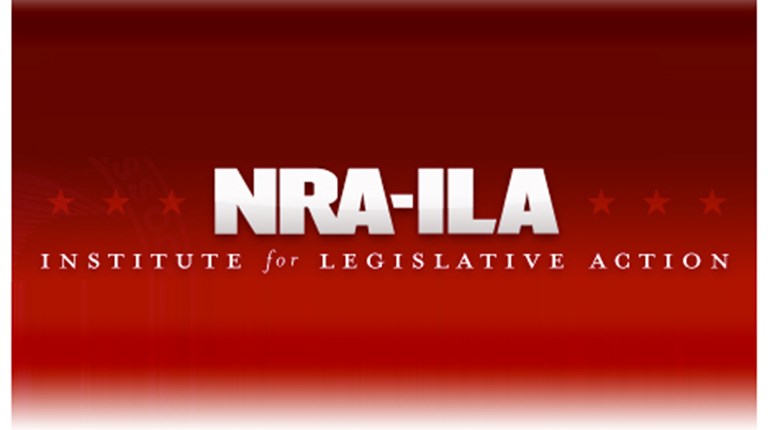
Electoral politics and legislation obviously play key roles in defending our firearm freedoms, and no organization is more effective in this realm than your National Rifle Association. Yet another vital facet of advancing and protecting the Second Amendment is pro-gun litigation. Here, too, the NRA leads the way.
America’s Founding Fathers recognized that the right to keep and bear arms extends from the inalienable, God-given right of self-defense. The U.S. Supreme Court explained that these rights existed even before the U.S. government was formed and that they take “certain policy choices off the table.” So when elected representatives attack or fail to safeguard gun owners’ rights, the battle shifts from the statehouses to the courts.
Protecting AR-15s And Other Popular Semi-Automatic Firearms
After the tragic shootings in Newtown, Conn., legislators in a small handful of states—including Connecticut, Maryland and New York—exploited the public’s understandable anguish to enact restrictions on popular semi-automatic firearms long sought by gun-control advocates. Of course, none of these laws would have prevented those crimes. Armed with the Supreme Court’s pronouncement that the Second Amendment protects ownership of firearms “of the kind in common use” for lawful purposes, the NRA is challenging these bans, all of which reach America’s most popular rifle, the AR-15.
At the trial court level, the Connecticut and New York cases—Shew v. Malloy and NYSRPA v. Cuomo, respectively—were decided along similar lines. The courts agreed that the banned firearms were commonly used for lawful purposes but found that the laws impose only a minimal burden on Second Amendment-protected rights because people could still choose from other legally available firearms. Thus, the court wrongly subjected the bans only to deferential “intermediate scrutiny” and found that the states’ asserted public safety justifications passed that test. Needless to say, such reasoning would hardly be tenable if the government were to ban books or close places of worship merely because other options it considered more acceptable were still available.The judge refused even to acknowledge that AR-15s and the like were commonly used for lawful purposes or that they had defensive applications.
Oral arguments in the appeal of both cases were heard last December before the U.S. Court of Appeals for the 2nd Circuit, with decisions in the cases still pending.
The Maryland trial court decision in Kolbe v. O’Malley was even more extreme, in that the judge refused even to acknowledge that AR-15s and the like were commonly used for lawful purposes or that they had defensive applications. The judge dismissed testimony by two pre-eminent experts in the field of ballistics—Dr. Gary Roberts and Buford Boone, who served for 15 years as Supervisory Special Agent of the FBI’s Ballistics Research Facility in Quantico, Va. Instead, she largely relied on the testimony of laymen and established anti-gun activists. Ultimately, the judge held that it didn’t matter whether the banned weapons fell outside the Second Amendment’s scope entirely, because the state had sufficient grounds to ban them. “[A]ssault weapons are military-style weapons designed for offensive use,” she wrote, “and are equally, or possibly even more effective, in functioning and killing capacity as their fully automatic versions.”
The case was appealed, and the U.S. Court of Appeals for the 4th Circuit heard oral arguments on March 25, 2015. While we cannot know how the court will rule, the judges at least asked some pointed questions of the attorney defending Maryland’s law. During one exchange, for example, the attorney was forced to admit that, like a revolver, a semi-automatic pistol fires one shot per activation of the trigger and is therefore covered by the Second Amendment. If that is the case, the judge asked him, why shouldn’t a semi-automatic rifle that does the same thing be protected?
Protecting Standard-Capacity Magazines
The laws cited in the aforementioned cases not only banned common and popular firearms, they also banned magazines for firearms based on their capacity. New York’s SAFE Act went even further, restricting the owners of “grandfathered” 10-round magazines to a load limit of seven rounds. In each case, the limits were less than those in the magazines commonly supplied by manufacturers with new firearms. A similar magazine limit enacted by Colorado was also challenged in the case of Colorado Outfitters v. Hickenlooper, although that law allowed a comparatively “generous” limit of 15 rounds (the law challenged in Connecticut set the cap at 10, while the SAFE Act originally set the limit at seven, before a later revision changed it to 10).
Of course, millions of Americans own untold millions of magazines with capacities exceeding 10 or 15 rounds, and those magazines are overwhelmingly used for lawful purposes. Thus, if the Supreme Court meant what it said in the Heller case, these should also be protected.
Once again, however, the trial courts wrongly held that the limits do not substantially burden the right to self-defense. In doing so, they credited testimony of the states’ witnesses that defensive uses of firearms rarely result in more than 10 shots being fired. Thus, the reasoning went, the bans were entitled to deferential scrutiny by the courts, which was satisfied by the states’ assertions that forcing criminals to change magazines more frequently might slow down their rampages.
As with the Connecticut, Maryland and New York cases, the Colorado case is on appeal, with arguments before the U.S. Court of Appeals for the 10th Circuit still pending. In recent years, NRA has been involved in significant litigation aimed at ensuring governments respect the right to bear arms for self-defense outside the home.
The irony of all these cases is that the effectiveness and capacity of a firearm is always held to count against the law-abiding user. Thus, the better designed and equipped a firearm is for its primary defensive purpose—e.g., stopping lethal threats—the less constitutional protection it receives. Of course, with so many firearms and magazines already in circulation, none of these laws does anything to stop criminals from obtaining whatever prohibited items they want, but they do prevent law-abiding people from doing so. Thus, if anything, they shift the advantage to criminals. In fact, the trial judge in the NYSRPA case even acknowledged as much in finding that the load limit on firearms used for self-defense was unconstitutional and “arbitrary.” Because grandfathered 10-round magazines would also be available to criminals, the judge reasoned, the regulation “disproportionately affects law-abiding citizens.”
Beyond state restrictions, some localities, such as Sunnyvale, Calif., have also moved to prohibit commonly owned magazines. Through a 2013 ballot measure, Sunnyvale enacted a total ban on the possession of magazines capable of holding more than 10 rounds. Unlike the state measures in the other cases, this local law did not even “grandfather” in magazines lawfully possessed at the time it was enacted. An NRA-backed case has been seeking an injunction on enforcement of the law, but in March, a three-judge panel of the U.S. Court of Appeals for the 9th Circuit denied the request. Further proceedings will continue in that case, and could include a direct appeal to the U.S. Supreme Court or a request to have the case reheard by the full 9th Circuit.
Protecting Right-To-Carry
In recent years, NRA has been involved in significant litigation aimed at ensuring governments respect the right to bear arms for self-defense outside the home. The most notable of these cases are Shepard v. Madigan in Illinois and Peruta v. San Diego in California.
In Shepard, NRA state affiliate Illinois State Rifle Association challenged Illinois’ complete ban on carrying firearms outside the home for self-defense. Although the trial court sided with the state, the U.S. Court of Appeals for the 7th Circuit reversed that decision, holding the ban unconstitutional in December 2012. Illinois subsequently passed a concealed-carry licensing law, and upward of 100,000 licenses have been issued to date.
Peruta involves a challenge to a San Diego County Sheriff’s policy that prevents most law-abiding adults from getting a license to carry a firearm, in that the sheriff refuses to recognize general self-defense as sufficient “good cause” for the issuance of a license. In February 2014, a three-judge panel of the 9th Circuit ruled that policy violated the Second Amendment. Unfortunately, that decision has been vacated, pending a rehearing by an 11-judge panel on June 15, 2015.
Cases Across The Gun Rights Spectrum
These high-profile cases are just part of the NRA’s pro-gun litigation portfolio. In Pennsylvania, we’re suing Pittsburgh, Philadelphia and Lancaster over violations of the state’s firearm pre-emption law. We’re also involved in the fight to protect gun owners’ privacy and rights of association against intrusive NSA surveillance practices.
For years, we’ve helped to counter lawsuits aimed at forcing the Environmental Protection Agency to ban lead bullets.
Litigation can be a tortuously slow process, with cases spanning years’ worth of appeals and procedural maneuvers. Your NRA is committed to fighting as long as it takes, however, to ensure that the right to keep and bear arms gets the same protection and respect from the courts as every other civil right.


































